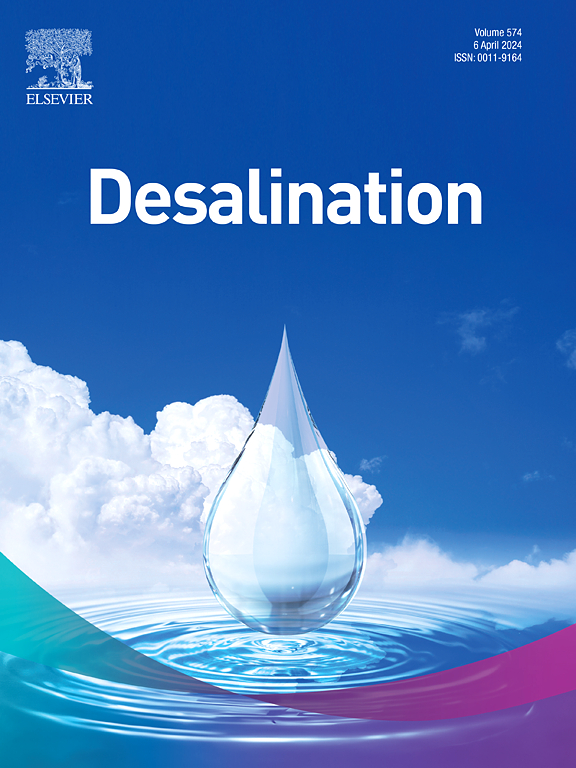Similarity analysis of membrane distillation utilizing dimensionless parameters derived from process-governing equations
IF 8.3
1区 工程技术
Q1 ENGINEERING, CHEMICAL
引用次数: 0
Abstract
There is a significant disparity in performance outcomes between the lab-scale and full-scale modules of membrane distillation (MD). Furthermore, extrapolating the performance of a lab-scale module to anticipate the performance of a large-scale MD system is misleading due to the non-linear relationship between different scales and several design and operating characteristics. By systematically analyzing and optimizing the key parameters affecting DCMD performance using dimensionless numbers, we can improve the design, operation, and scalability of DCMD systems. This approach allows for a deeper understanding of the underlying transport phenomena and achieves high-performance, energy-efficient DCMD processes. The dimensionless groups were obtained by normalizing the governing equations and compared with the π-theorem results. Some groups were adjusted, while others were redefined to clarify their physical significance. Additionally, new groups were added to be included in the DCMD, marking the first time this has been done. The Pi grouping mathematical technique resulted in the generation of seven additional dimensionless groups. The influence of dimensionless numbers on the performance of DCMD was evaluated using literature-validated data for four different scale modules. The results revealed the existence of a novel dimensionless parameter that can be employed to assess the efficiency of the spacer in the DCMD system. This work proposed two new dimensionless numbers that can define the DCMD performance, which would be vital for membrane comparison studies and DCMD scaling-up. Additionally, two correlations between heat and mass transmission in DCMD are presented, which are applicable irrespective of the size of the membrane module.
求助全文
约1分钟内获得全文
求助全文
来源期刊

Desalination
工程技术-工程:化工
CiteScore
14.60
自引率
20.20%
发文量
619
审稿时长
41 days
期刊介绍:
Desalination is a scholarly journal that focuses on the field of desalination materials, processes, and associated technologies. It encompasses a wide range of disciplines and aims to publish exceptional papers in this area.
The journal invites submissions that explicitly revolve around water desalting and its applications to various sources such as seawater, groundwater, and wastewater. It particularly encourages research on diverse desalination methods including thermal, membrane, sorption, and hybrid processes.
By providing a platform for innovative studies, Desalination aims to advance the understanding and development of desalination technologies, promoting sustainable solutions for water scarcity challenges.
 求助内容:
求助内容: 应助结果提醒方式:
应助结果提醒方式:


